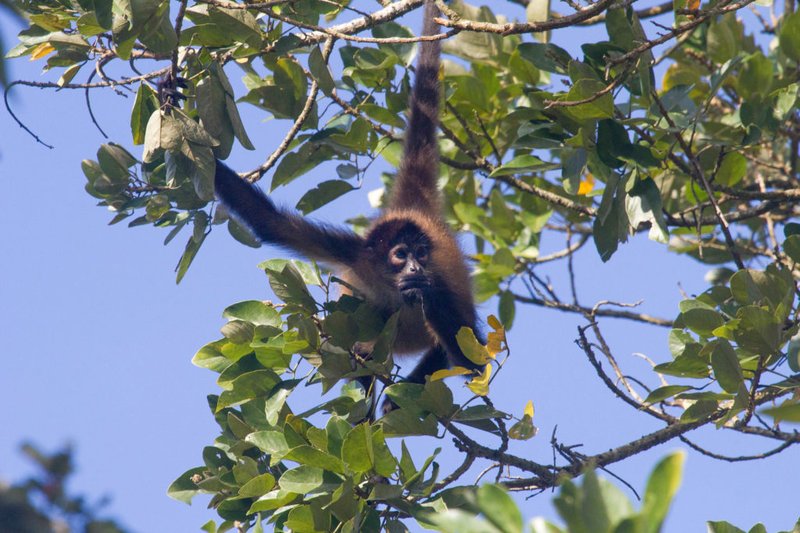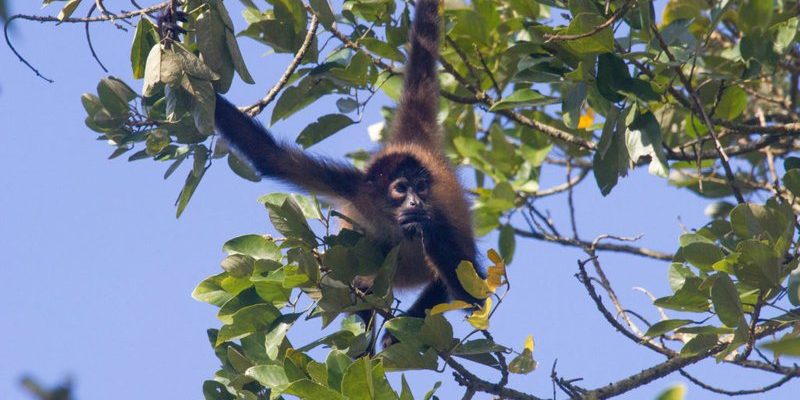
As we explore this topic, we’ll look at various factors affecting spider monkey populations, conservation efforts being made, and what you can do to help. It’s essential to understand why these monkeys matter not just for biodiversity but also for the health of their ecosystems. So grab your coffee, sit back, and let’s venture into the world of spider monkeys.
Understanding Spider Monkey Species
Spider monkeys belong to the Atelidae family and are known for their distinctive features, including long limbs and prehensile tails. There are several species of spider monkeys, including the black spider monkey (Ateles paniscus), howler spider monkey (Ateles hybridus), and *Geoffroy’s spider monkey* (Ateles geoffroyi). Each species has unique characteristics and habitats, making them fascinating subjects of study.
You might be wondering why there are different species. Well, just like how some of us have different tastes in music, these monkeys have adapted to various environments. Each species thrives in distinct habitats ranging from tropical forests to dry woodlands. However, they all share similar social structures, often living in large, cohesive groups. This social aspect is crucial, as they rely heavily on their family units for protection and interaction.
Unfortunately, many of these species face risks that have led to declining populations. Habitat destruction, poaching, and illegal wildlife trade are some of the significant threats that spider monkeys confront. Let’s take a closer look at what’s causing these issues.
Threats to Spider Monkey Populations
When thinking about the threats to spider monkeys, imagine a beautifully woven tapestry slowly unraveling. Each thread represents a vital element of their existence—habitat, food sources, and social structures. Unfortunately, many of these threads are being pulled apart, and the tapestry of their survival is at risk.
1. Habitat Loss: One of the primary threats to spider monkeys is deforestation. Logging, agriculture, and urban development have drastically reduced their natural habitats. This loss not only limits their living space but also affects their food supply. Without trees to climb and fruit to eat, these monkeys struggle to survive.
2. Human Encroachment: As humans expand into wildlife territories, conflicts arise. Spider monkeys sometimes wander into agricultural areas, which can lead to them being seen as pests. In retaliation, farmers may harm these monkeys, further endangering their populations.
3. Illegal Wildlife Trade: You may have seen cute spider monkeys featured in social media, but the reality is that many end up in the black market as pets. This illicit trade is devastating; young monkeys are often taken from their families, leaving behind a ripple effect that impacts their social groups and overall population.
Understanding these threats is the first step toward making a difference. Next, let’s explore what is being done to protect these incredible creatures.
Conservation Efforts for Spider Monkeys
Luckily, there are various conservation initiatives in action aimed at saving spider monkeys. Organizations and researchers are stepping up to tackle the issues head-on, trying to ensure these monkeys don’t vanish from our planet. Here’s how they’re working to make an impact:
1. Protected Areas: Many countries have established national parks and wildlife reserves to safeguard spider monkeys and their habitats. These protected areas play a crucial role in conserving the natural environment and giving these monkeys a safe place to thrive.
2. Reforestation Projects: Some groups are actively engaged in reforestation efforts, planting trees in areas where forests have been depleted. By restoring these habitats, they help create a sustainable future for spider monkeys, providing them with the food and shelter they need.
3. Education and Awareness: Educating local communities about the importance of spider monkeys and their role in the ecosystem is vital. Awareness campaigns help reduce human-monkey conflicts and encourage people to participate in conservation efforts.
4. Legislation: On a broader scale, laws have been put in place to protect spider monkeys from illegal hunting and trafficking. Stricter enforcement of these laws is essential to ensure the safety of these primates in the wild.
These conservation measures are essential, but they require ongoing support and awareness. It’s not just about saving the monkeys; it’s about preserving a piece of our planet’s rich biodiversity.
The Role of Spider Monkeys in Ecosystems
You might find yourself asking, “Why should I care about spider monkeys?” Well, these monkeys play a critical role in their ecosystems, and losing them could have a domino effect on many other species.
Seed Dispersal: Spider monkeys are known for their fruit-heavy diet. As they move through the trees, they consume fruit and then disperse the seeds through their droppings. This process is vital for forest regeneration, as it helps trees and plants grow in new areas. Essentially, spider monkeys act as nature’s gardeners!
Biodiversity Indicators: The health of spider monkey populations reflects the overall health of their rainforest habitats. When these monkeys thrive, it usually indicates a balanced ecosystem. Conversely, a decline in their numbers can signal environmental issues that need addressing.
Community Connection: Spider monkeys also hold cultural significance for many communities in Central and South America. They are often featured in local folklore and traditions, serving as a reminder of the rich biodiversity that surrounds us. Protecting spider monkeys means preserving cultural heritage as well.
Understanding their ecological importance adds a layer of urgency to conservation efforts. Without spider monkeys, we risk losing much more than just a fascinating species; we jeopardize the delicate balance of entire ecosystems.
What Can You Do to Help?
Feeling inspired to make a difference? Great! There are several practical ways you can contribute to the conservation of spider monkeys and their habitats. Here’s how you can take action:
1. Support Conservation Organizations: Many nonprofits focus on protecting spider monkeys and their habitats. Consider donating or volunteering your time with organizations that actively work in this area.
2. Spread the Word: Share what you’ve learned about spider monkeys with your friends and family. The more people know, the more support there is for conservation efforts. Use social media to raise awareness about their plight.
3. Be a Responsible Consumer: When shopping, look for products that are sustainably sourced and environmentally friendly. Avoid palm oil products that contribute to deforestation, impacting spider monkey habitats.
4. Educate Yourself and Others: Keep learning about wildlife conservation and the challenges faced by species like spider monkeys. The more informed we are, the better equipped we’ll be to advocate for change.
By taking small steps, you can be part of a larger movement dedicated to protecting these incredible primates. Every action counts, and collectively, we can make a real difference.
The plight of spider monkeys is a story of beauty intertwined with struggle. As we’ve seen, these fascinating creatures face numerous threats, but there’s hope through concerted conservation efforts. By protecting spider monkeys, we also protect the diversity of the ecosystems they inhabit and the cultural stories they represent.
So, as you go about your day, remember that the world’s spider monkeys need our support. Whether through donations, education, or simply spreading awareness, each of us has a role to play in ensuring these incredible animals have a future. Let’s work together to keep swinging through the trees and thriving in the wild for generations to come.

